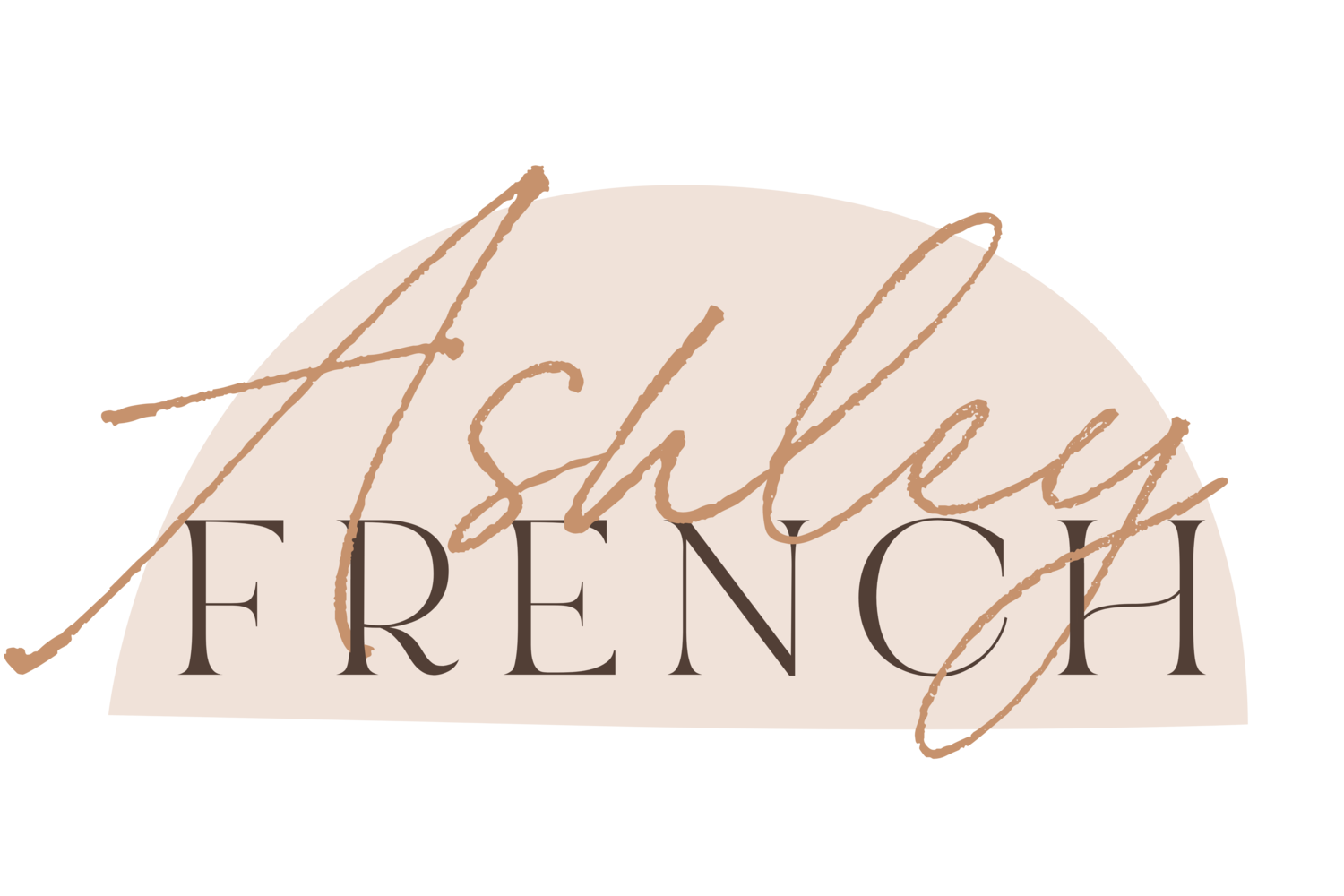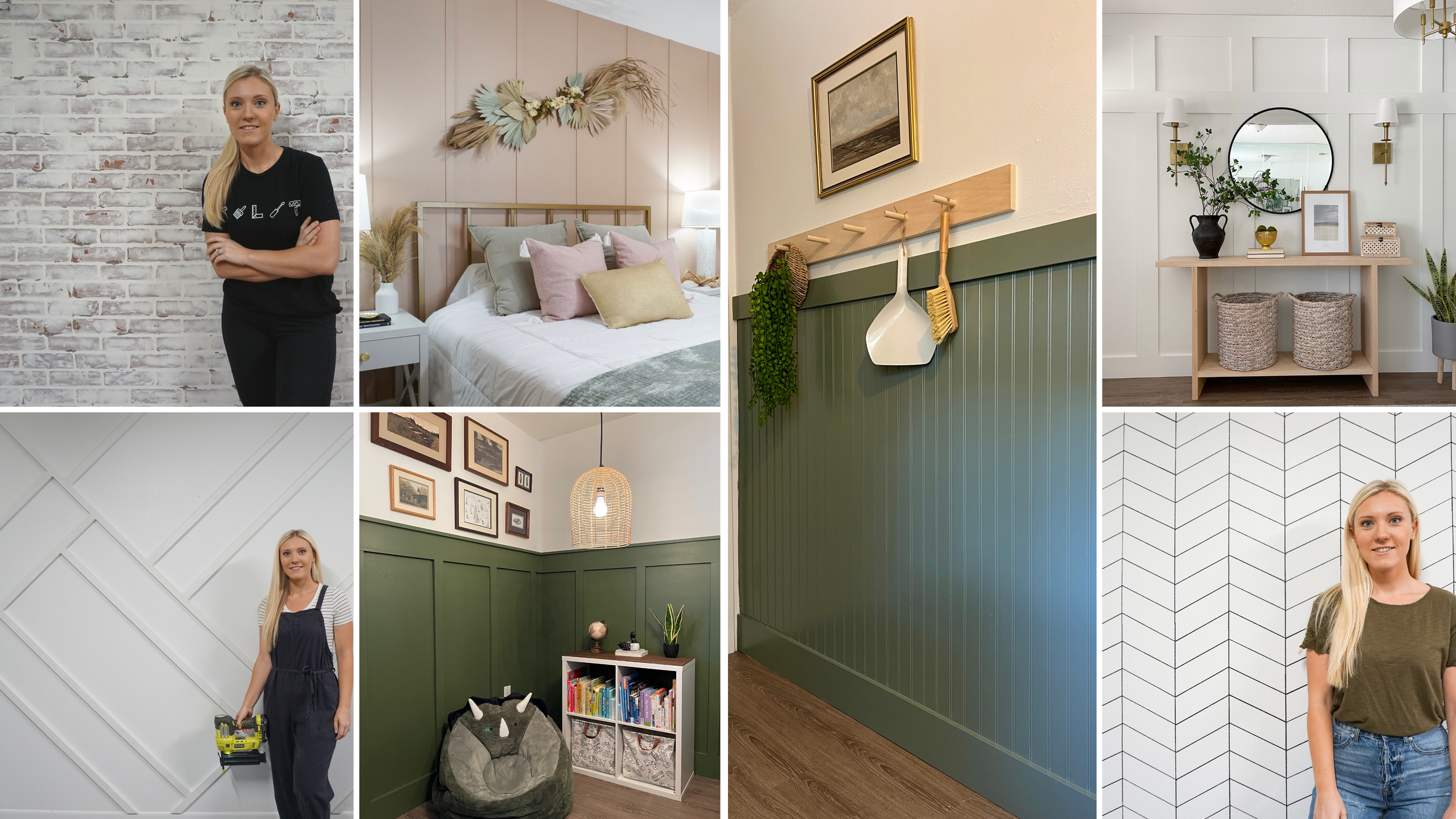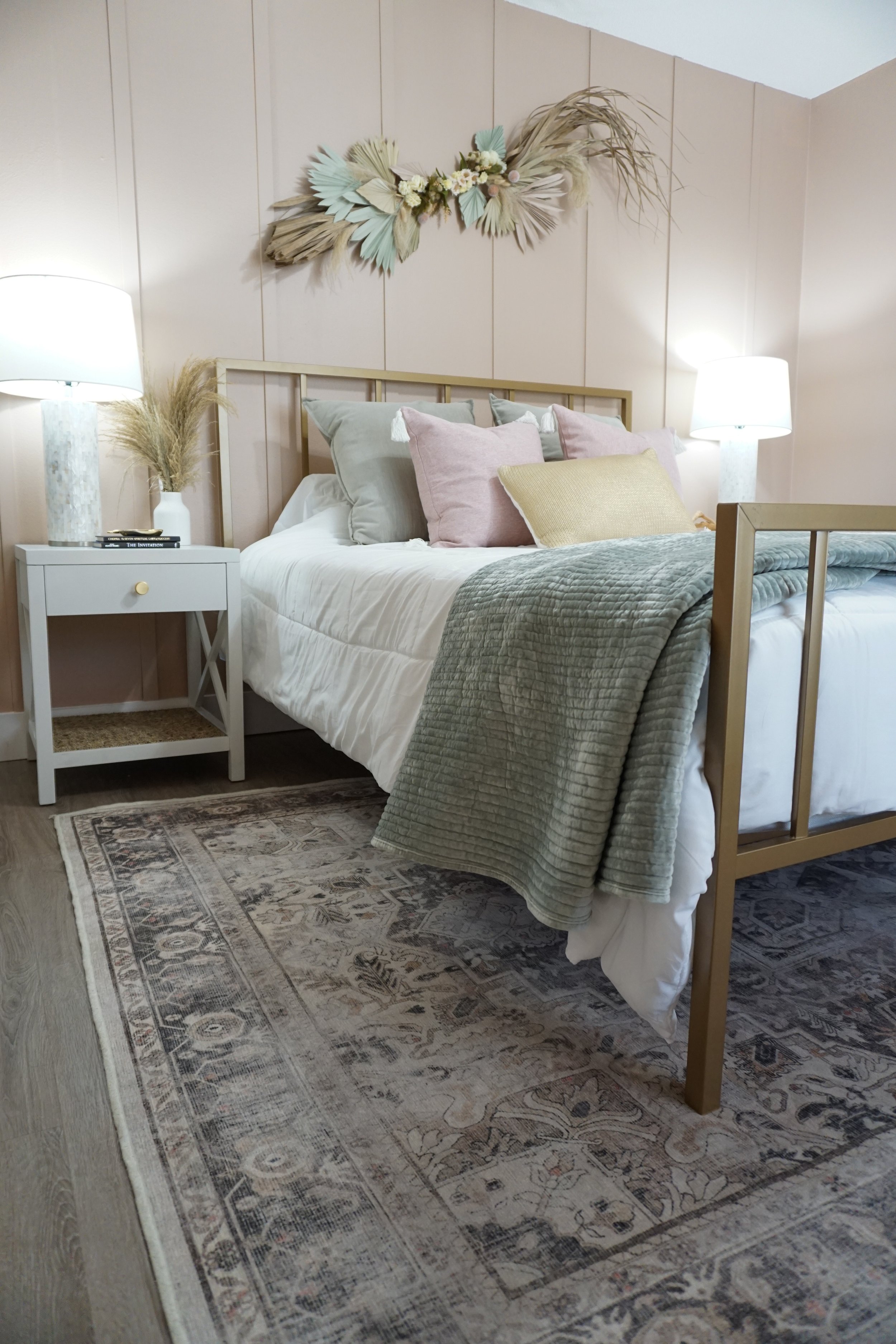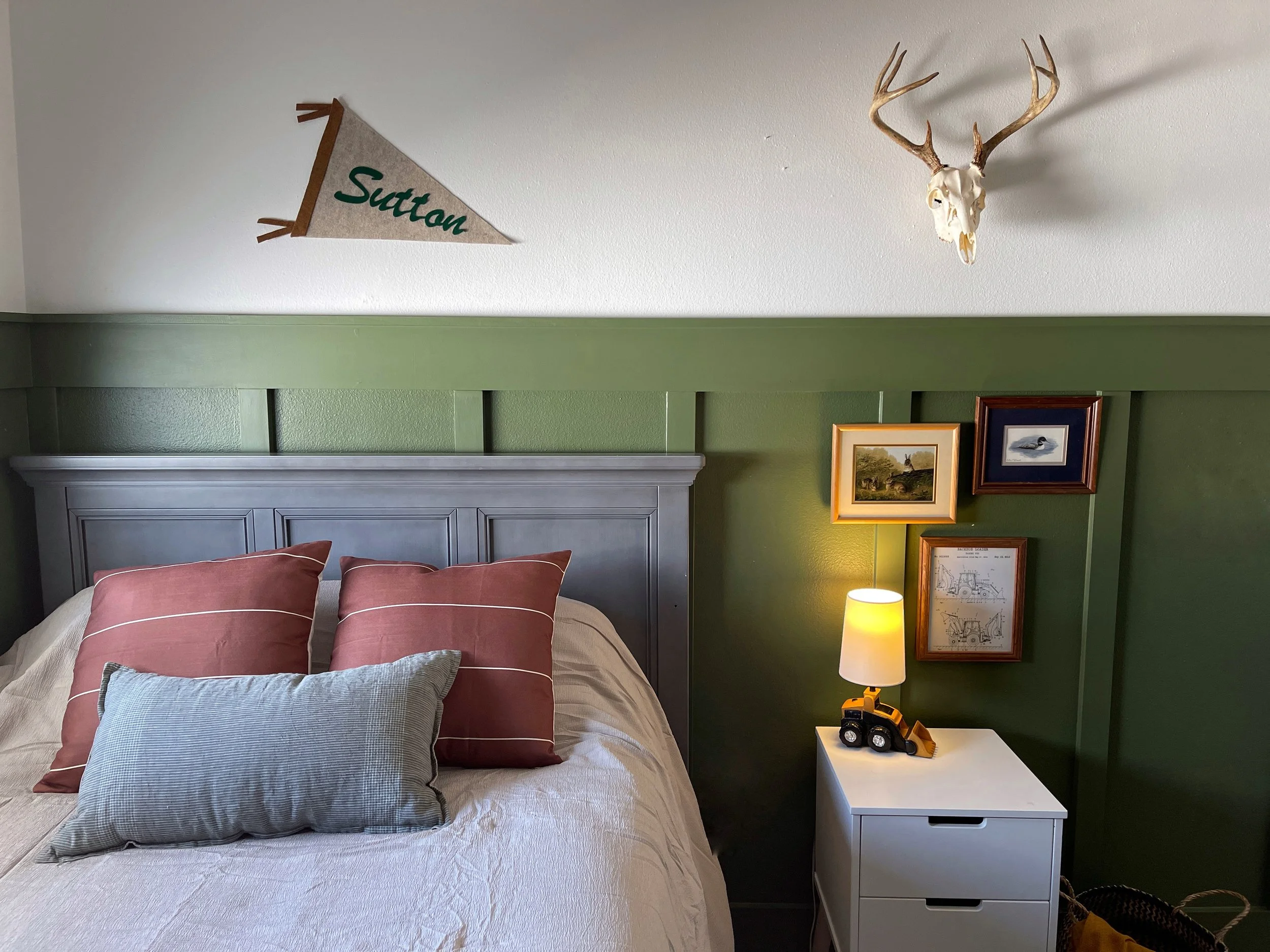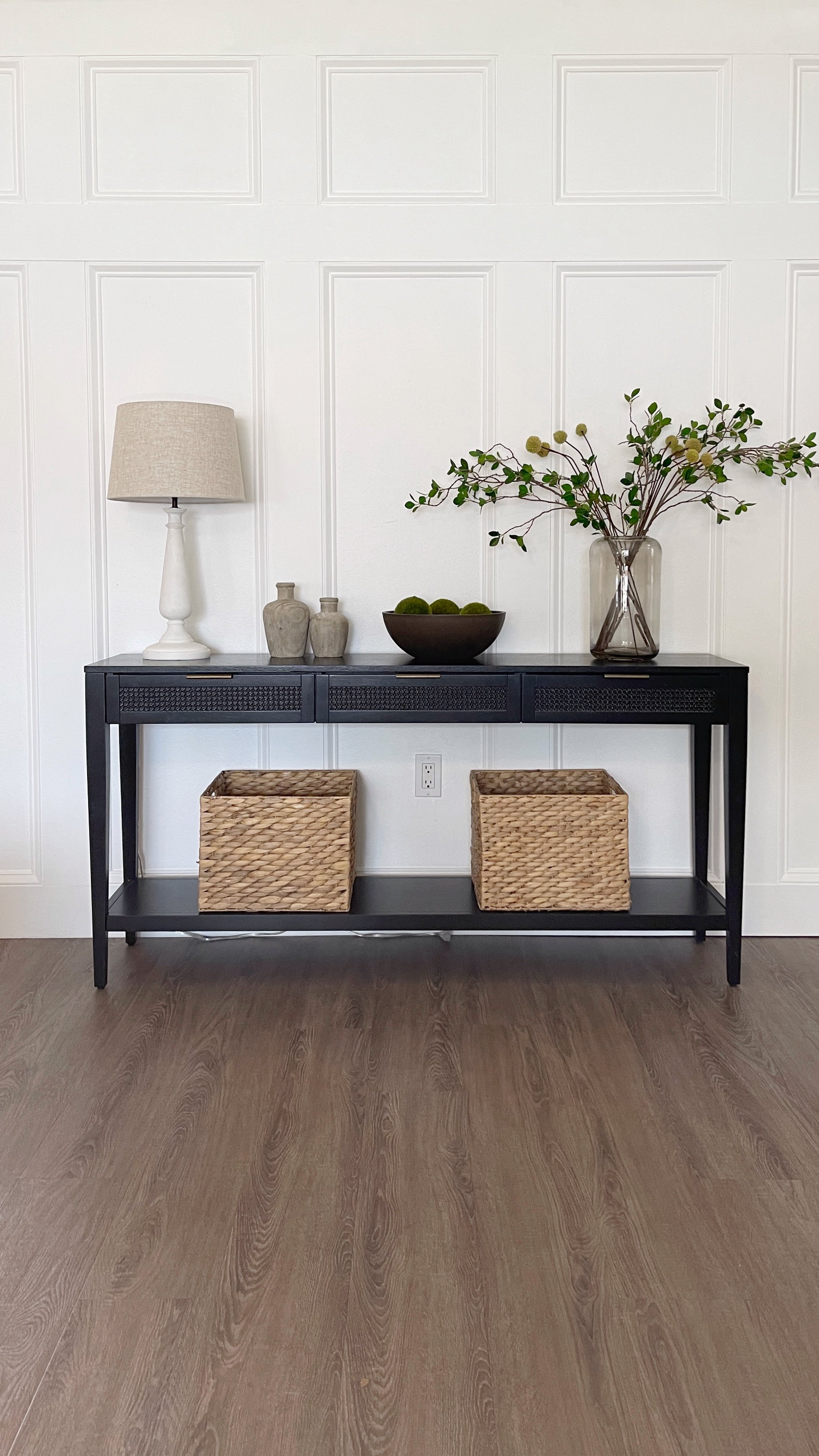Tips for Creating the Perfect Accent Wall!
In the past 4 years I have installed 14 accent walls and I always get a ton of questions about them like:
Which wall do I pick to do the accent on?
Which accent wall will look best in my space?
Can you do an accent wall on textured walls?
I am answering all the Accent Wall questions in this blog post!
Which wall do I pick for the accent wall?
There are no rules that say which walls you should choose in a room to do an accent wall on. But, most people choose to do their accent walls on the main focal wall in a room. Ask yourself: which wall is the main focal wall that you look at first or look at the most when you enter the room? For example, in a living room the main focal wall is usually the wall that the TV is on. In a bedroom, the main focal wall is usually the wall that the bed is against. In a bathroom, the main focal wall is usually the wall that the vanity sits on or both the vanity wall and the wall across from the vanity that mirrors it. In addition to the main focal wall, usually you can’t go wrong by doing all four walls in the room too. In my son’s bedroom and in my laundry room there really wasn’t a focal point so I did all four walls in those rooms.
What type of accent wall or what style of accent wall looks best?
This is going to be different for everyone! What is your design style? If you do not know, then you need to find out what design style you like the most. An easy way to determine what your design style is or what you want it to be is to go onto Pinterest and search: “living room design”, “bedroom design”, “kitchen design”, “home design”, and “interior design styles”. Save all the photos that really stand out to you. Once you have saved a bunch of photos on Pinterest, go back through them and read the descriptions and see what style you chose the most of. Did you pick a lot of “modern farmhouse”, or “scandinavian”, or “traditional”, or “coastal”, or “mid century modern”? You will probably have a mix but take note of which one you have the most of and this is most likely your design style. Once you know your design style, then you can do a specific search in Pinterest for accent walls that fit into that style (“Modern Farmhouse Accent Walls”).
Here are a few accent walls paired up with design styles:
Traditional: Beadboard Paneling, Board and Batten, Wainscoting/Box Molding, Wallpaper with traditional patterns
Rustic/Farmhouse: Brick, Shiplap, Stone
Clean/Modern: Tall Board and Batten, Skinny Slat Wall
Bold/Trendy/Bohemian: Geometric Wall, Sharpie or Sponge Paint, Wallpaper with bold patterns
Can you do an Accent Wall on textured walls?
This is actually my most asked question. Yes you definitely can! See my pictures below of my accent walls with texture. At the end of the day, regarding textured walls, it all comes down to you and what you like. All of my homes have had an orange peel texture on the walls and that texture has never bothered me so I just leave the texture alone and do my accent walls. If I had a thicker texture like knockdown, then I would probably do a thin, smooth backer board on the walls first and then add my accent walls. But there is no rule that says you can’t do your accent walls right on the texture. One tip that will help make your textured walls not as noticeable is to use a low-sheen paint like a flat, matte, or eggshell. Another tip is to always caulk the seams where the boards touch the wall and that also helps hide the fact that your wall may be textured.
What tools do I need to install an accent wall?
Well this really depends on the type of accent wall you are doing. I have included a list of tools below that are usually required for most accent walls. Any accent wall that involves adding thin pieces of wood (board and batten, shiplap, geometric wall, slat wall, beadboard, etc) will require you a miter saw, nail gun, and measuring tape. If you are doing an accent wall involving large sheets of material (beadboard, brick panels, etc) then you will also need a table saw or circular saw to make the long crosscuts and a jigsaw to cut the panels out around outlets and windows. I have created short how-to videos for beginners teaching you how to use power tools on my YouTube channel, watch them here. If you do not own any tools, a couple tool-free accent walls you could try are peel and stick wallpaper, sharpie or sponge paint walls, or a PVC lattice wall.
If you are really wanting to start adding some beautiful accent walls to your home but don’t know where to start, check out my YouTube Channel where I teach you how to confidently use power tools and install accent walls.
